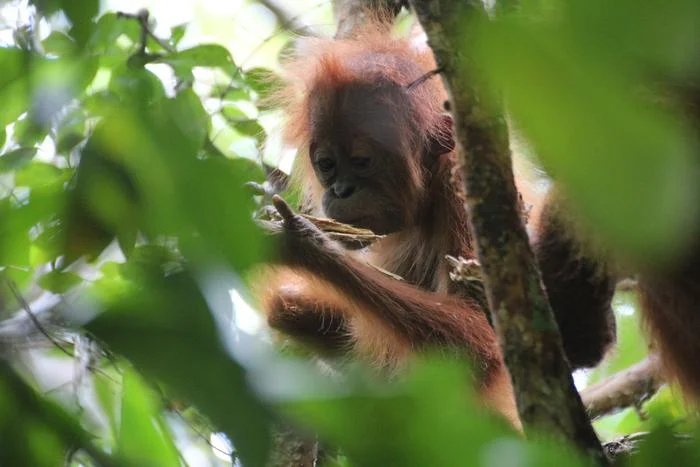
Orangutans in Captivity: Exploring the Impact of Environment on Cognitive Development
In a groundbreaking study, researchers have uncovered fascinating differences between the exploratory behaviors of wild and zoo-housed Sumatran orangutans. This research not only sheds light on how environment shapes their cognitive abilities but also raises important considerations regarding animal welfare.

The study focused on a sample of 51 orangutans, spanning an impressive age range from just six months to 76 years. Conducted at the Suaq Balimbing research site in Indonesia for the wild individuals, and through four reputable zoos in Germany and Switzerland for the zoo-housed members, researchers documented about 12,000 instances of exploratory object manipulation (EOM). To the surprise of many, they found that orangutans in captivity were not only more frequent in their exploratory behavior but also exhibited a broader and more complex range of interactions compared to their wild counterparts.
Isabelle Laumer, the lead author of the study, remarked, "Our study shows that orangutans in zoos not only explore more, but they also explore differently. They use a wider range of actions and are more likely to use tools or engage with multiple objects at once." This is a significant observation considering that wild orangutans generally focus on natural materials like bark and leaves, while their captive relatives interact with designed enrichment items such as plastic toys and puzzles.
Importantly, while both groups of orangutans began their exploration at similar developmental stages, zoo-housed orangutans maintained these behaviors well into adulthood. This is in stark contrast to wild individuals, whose exploratory actions sharply declined post-weaning, likely due to the survival stresses they face in their natural habitat.

According to Caroline Schuppli, senior researcher on the project, these findings provide a deeper understanding of the environmental influences on cognitive development. She stated, "By comparing wild and zoo-housed animals, we can better understand the full extent of a species’ cognitive potential." This analysis may also prompt wildlife advocacy groups and zoos to rethink how they design habitats to foster cognitive growth and promote behavioral complexity among primates.
In summary, this research highlights the profound effects that captivity has on the exploratory behaviors and cognitive abilities of orangutans. It invites us to reflect on how we can further enhance the environments in which these magnificent apes live, ensuring they thrive both mentally and physically. What changes do you think should be made in zoos to further support the cognitive development of orangutans? Share your thoughts in the comments below!